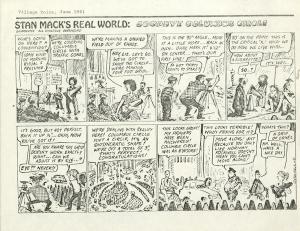TRAFFIC
NEWYORK,NY
Traffic was the winning project in a 1981 competition organized by the ReVisions program of the Institute for Architecture and Urban Studies, founded by architect Peter Eisenman with the support of Philip Johnson in 1967. The competition — juried by historian Joan Ockman alongside architects Christian Hubert and Deborah Berke — was prompted by the impending demolition of the New York Coliseum, on the west side of Columbus Circle, site of the present-day Deutsche Bank Center (formerly Time Warner Center). The competition received many proposals to rebuild the landmark circle as a Baroque pedestrian piazza, reflecting the Eurocentric and historicist tastes of architectural postmodernism. By contrast, Traffic accepted the contemporary function of the urban circle as a vehicular thoroughfare. The project proposed unifying the disparate traffic islands with a material indigenous to the site: standard international orange traffic cones arranged in a perfect grid. Though the project was conceived as a thought experiment, the competition organizers invited the winning proposal to be realized on-site.
In order to give the circle a formal presence, even if only for a day, we propose to cover all but the areas for moving cars with a field of international orange traffic cones spaced at four-foot intervals. The synthetic landscape is intended to visually unite the disparate islands within the rotary, much in the way snowfall veils and connects unlike things. The perceptual possibilities include those from a vantage point of the passerby meandering through the field, the vehicle traversing the site at speed, and the static observer in a nearby tower. The cone, an object common to a traffic circle, loses its meaning in this context, yet obliquely refers to the unsettling quality of this place for the pedestrian.
Traffic occupied Columbus Circle for twenty-four hours on June 25, 1981. Installation began with the 4:00 a.m. delivery of traffic cones, loaned by the New York State Department of Transportation. Surveying equipment was employed to define the grid. Weather conditions shifted radically throughout the day: sun in the morning followed by drizzling rain, fog, and a storm in the late afternoon. The atmospheric conditions broadcast the cones’ vibrant color onto the surroundings. At the end of the installation’s single-day run, the cones were collected to be redeployed on area streets and highways.
| Location Columbus Circle, New York, United States |
| opening25th June 1981 | closed25th June 1981 |
| Team | Elizabeth Diller and Ricardo Scofidio |


